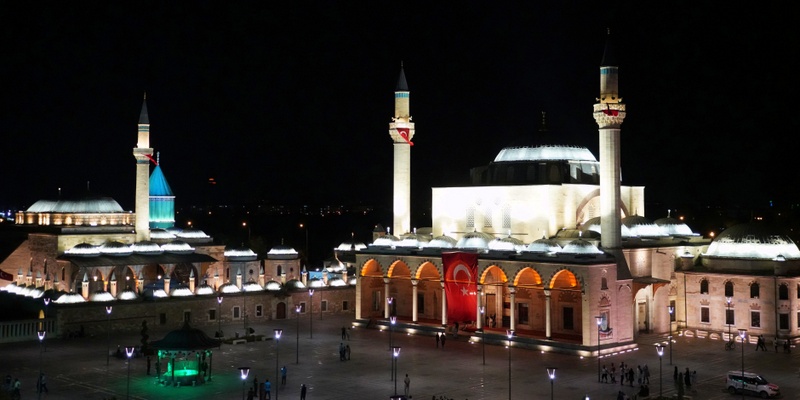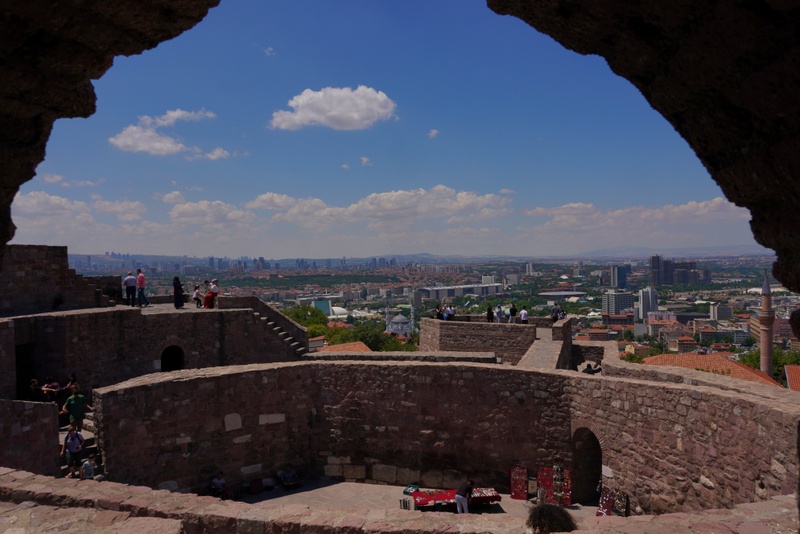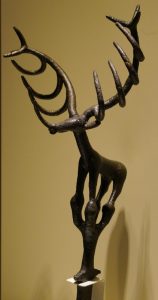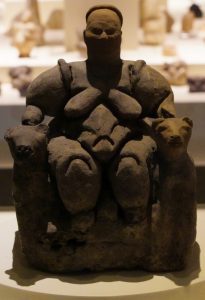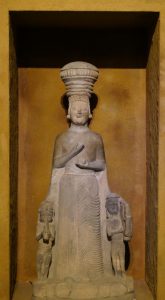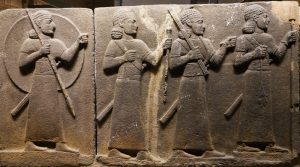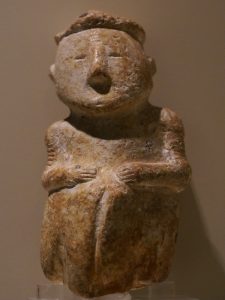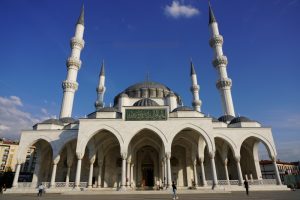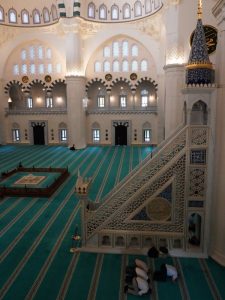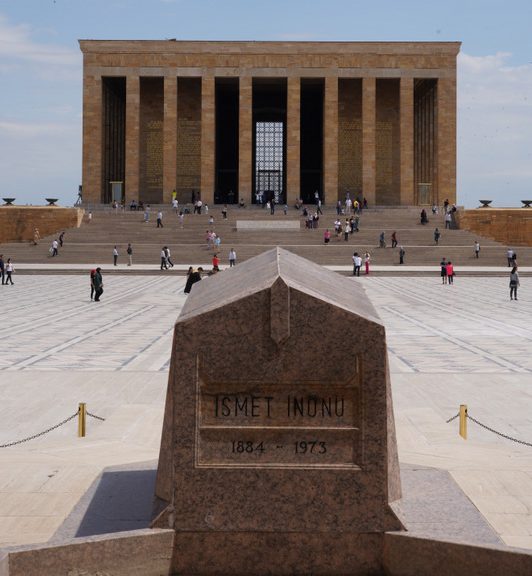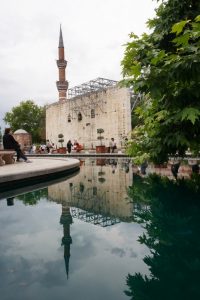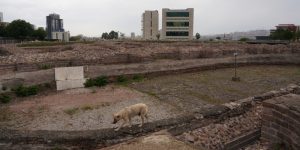Ankara & Konya July 16 – 19, 2019
Ankara
Ankara has a long and rich history. The ancient city of Ancyra stood at the crossroads between the East and West and during the Roman period, it was the capital of the province of Galatia owing to its strategic location. It was made the capital of Turkey on establishment of the Republic on October 29, 1923. Located at the centre of the country’s road and railway networks, it is also an important commercial and industrial city. Though situated in one of the driest places of Turkey and surrounded mostly by steppe vegetation, the city with a population of about 5 million, is considered a green city in terms of green areas per inhabitant.
The historic centre of Ankara is a rocky hill rising 150m over the left bank of the Ankara Cayi, a tributary of the Sakarya River. There are various Hittite, Phrygian, Hellenistic, Roman, Byzantine and Ottoman archaeological sites. Well-preserved examples of Roman and Ottoman architecture can be found throughout the city. The most remarkable one is the 20 BC Temple of Augustus that boasts the Monumentum Ancyranum, the inscription recording the Res Gestae Divi Augusti.
July 16 Tuesday: Old City
I never over-plan my travel: I often only fix the dates and the start and ending points. Once on the road, I go where my fancy or fate takes me. When I arrived in Istanbul on July 3, I had no idea where I would go after Gaziantep. As Sabahattin had to go to Ankara to pick up another group, I might as well go with him to Ankara. I had a brief stop in the capital over 25 years ago. It’s time to take a closer look.
As I had already travelled non-stop since July 3, I decided to go slow. I did not get up till 9:30am and leave the hotel till 11 am. I planned to wander around the old city.
I took a taxi (200TL) which dropped me near the ruins of the castle. I enjoyed strolling through the short main street leading to the castle. The whole place has smartened up: most of the old houses have been renovated and painted. They have been turned into cafes, restaurants and souvenir shops.
I like the irregular shaped fortress which has four layers of high and low walls. It is a fun walk with unrivalled panoramic views of the capital. But given the uneven heights of the walls, I walked with extra caution: I did not want to fall and break my neck.
Then I found a restaurant close to the castle with a terrace. I went in and had pasta for lunch. I sat comfortably on the terrace enjoying the views of the city and did not leave till 3:30pm.
My second and last stop of the day was the famous Museum of Anatolian Civilisations. I paid an entrance fee of 36 TL. As I would have at the most two hours in the museum, I decided not to get the audio guide. This was a big mistake.
The museum housed in the Ottoman Mahmut Pasa Bazaar storage building was opened in late 1960s. This world-class museum is one of the best museums in Turkey and have excellent exhibits of Anatolian archaeology.
The display starts with the Paleolithic era and continue chronologically through to the Ottoman Periods. Extensive collections of excavated artifacts from each period are well-presented and illustrated in each section.
Paleolithic Era (before 8000BC)- Stone and bone tools from the Antalya Karain Cave.
Neolithic Age (8000-5500 BC)- Mother Goddess sculptures, wall paintings, clay figurines, agricultural tools etc from Catalhöyük. The most impressive exhibits are a hunting scene on plaster from the 7th millennium and walls paintings of Mount Hasan eruption.
Chalcolithic Age (copper-stone) (5500-3000BC)- A large collection of stone and metal tools, goddess figurines, seals and decorative jewelry from Hacilar and Canhansan
Early Bronze Age (3000 – 1950 BC)- Exquisite and beautiful solar discs, deer-shaped statuettes and gold jewelry from Beyce Sultan
Assyrian Trading Colonies (1950-1750 BC)- Cuneiform tablets, drinking vessels in the shape of sacred animals, weapons etc from Kültepe, Acemhöyük and Boğazköy
Hittite Period (1750-1200 BC)- The relief of the God of War taken from the King’s Gate at Boğazköy (Hattusa, A World Heritage Site); the tablet in Akkadian scripts (1275-1220 BC) which was a correspondence from Egyptian Queen Nefertari (wife of Ramses II) to Hittite Queen Puduhepa written after Kadesh Peace Treaty – the first peace treaty in the world history.
Phrygian Period (1200-700 BC)- Finds from the royal tumulus at Gordion (capital of the Sea People from the Balkans) which includes carved and inlaid wooden furniture, ritual vessels, statue of the Mother Goddess Kybele (the main deity worshipped by the Phrygians).
Late Hittite Period (1200-700 BC) – Colossal rock-cut reliefs and statues with soldiers and chariots, Hittite rulers, gods of the Hittite pantheon and statues of powerful animals from Malatya-Arslantepe, Karkamiş and Sakçagözü are displayed in the massive 10-doom hall of the building.
There are also exhibits on the Urartian Period (1200-600 BC), Lydian Period (1200-546 BC) and the Classical Period and Ankara through the ages. The collection includes artifacts from Greek, Hellenistic, Roman, Byzantine, Seljuk and Ottoman periods such as statues, jewelry and decorative vessels.
Now that I have travelled through some parts of the Upper Mesopotamia, I can better understand the historical developments and appreciate the exhibits from different periods. I wish I had the audio guide which would explain in greater detail on the key exhibits. Mesopotamia is the cradle of civilisation and there is too much to see and learn. If I return to Ankara one day, I would visit this museum again.
I left when the museum closed its door. Instead of taking the metro or a taxi to the hotel, I decided to walk so that I could see and have a sense of the place and people.
I followed the Atatürk Bld which is one of the main roads in the capital. The place is lively and orderly. There are lots of eateries and shops.
It was about 7:30 pm when I saw Sabahattin and his Iranian group at the hotel restaurant. He had kept a seat for me and treated me to dinner. I was moved and appreciate his generosity.
July 17 Wednesday: Anitkabir & Old City
I had another leisure day. I took a taxi to Anitkabir (170TL), the mausoleum of Kustafa Kemal Atatürk (1881-1938). The monument comprises four main parts namely the Road of Lions, the Ceremonial Plaza, the Hall of Honour (location of Atatürk’s tomb) and the Peace Park that surrounds the monument.
The construction took nine years and was completed on September 1, 1953. The tomb of the second President of Turkey, Ismet Inöü, faces the mausoleum on the opposite side of the Ceremonial Ground. The expansive park contains around 50,000 decorative trees, flowers and shrubs in 104 varieties donated from around 25 countries.
After paying respect to the father of Turkey, I spent over an hour potting around the Museum on Independence. This museum makes smart use of the space of below the mausoleum. Countless historic photos, many new installations showing three key battles and detailed illustrations on progress made since the establishment of the Republic.
I was a bit tired after walking for over two hours. It was hot. I therefore took a taxi to the old city again. I walked to the Haci Bayram Mosque named after Haci Bayram- Veil, a religious scholar and founder of the Bayramiye Cult in Ankara. The mosque is located next to his tomb.
The mosque is a rectangular building with brick walls and a tiled roof. Restored in 1714, 1940 and 2011, the mosque is notable for its hand-carved embroidering.
Right next to the tomb is the remains of the famous 20 BC Temple of Augustus. The ruin of high wall seems to become an integral part of the landscape with a mosque, a tomb and a garden with a fountain.
Some Roman remains are scattered in this area. I followed a trail and passed a Roman column with inscription standing next to the Ankara University.
Then I followed a pointer and reached a main street with some ruins across the road. I made a mistake in using the Google Map to find the entrance. I should have consulted Wikipedia which details how to reach the site. As a result, I wasted half an hour walking around the base of a plateau.
When I finally found the entrance to the ruins on the main street, it started to rain. I found a pavilion and sat there with half a dozen locals for almost half an hour. They were curious and we chatted in broken English.
The ruined remains of the Roman Baths are most impressive. The complex located about 400m from the centre of the old district of Ulus, is a rich archaeological site. It has been identified as a tumulus with Roman, mixed with Byzantine and Seljuk, material at the top and Phrygian settlement material at the base. The complex was uncovered by excavations carried out in 1937-1944.
The baths were constructed in the 3rd century by Emperor Caracalla (212-217). The complex comprised three principal rooms: the hot bath, the warm bath and the cold bath in a typical laid-out 80m x 120m classical complex. There was also a wrestling court surrounded by a portico with 128 marble columns (32 on each side) on the site.
The baths were in use up till the 8th century before being destroyed by fire. Today only the ruins of the basement and first floor remain. Tombs, gravestones, altars and other inscriptions from the Roman, Byzantine and late Hellenistic periods scatter around the former wrestling court.
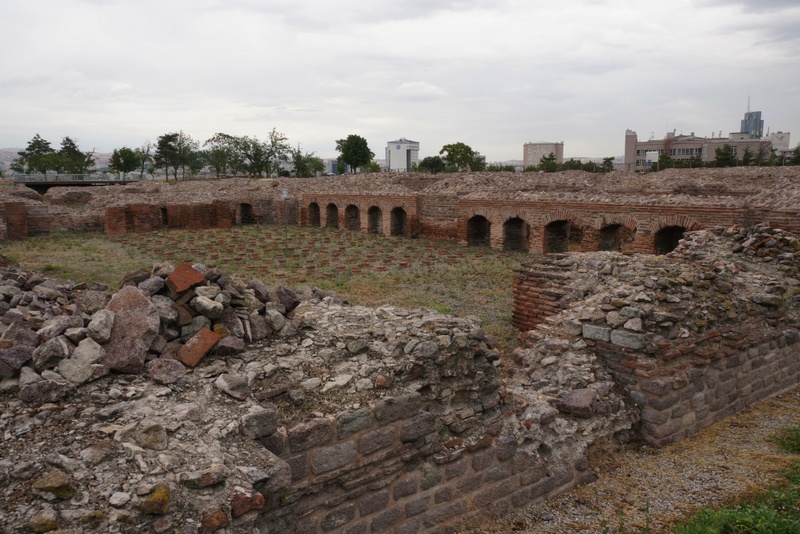
It was raining more heavily when I left the ruins. As I had lost my umbrella and did not want to get wet, I took a taxi. The reading of the metre was 130 TL when I was about to get off. But the moment the taxi stopped, it jumped to 200TL. The distance today was much shorter than the ride to the castle and could not be 200TL. I refused to pay since he was cheating. The cunning driver called a traffic police and showed him the metre. I was told to pay as per the metre. This was the only bad experience I had in Ankara.
With the help of the hotel owner, I booked a train ticket to Konya online. I walked to Kebab 49, a local restaurant recommended by Sabahattin and had a lovely kebab dinner. I enjoyed strolling in this middle-class neighbourhood which is leafy with a bohemia atmosphere.
Konya
Konya was a centre of culture and politics of Seljuks and became the capital of Seljuks during the 12th and 13th centuries. Seljuks created a unique artistic world with cultural links reaching out from the Anatolian heartland to central Asia, the Middle East and the shores of the Mediterranean Sea. Konya is littered with buildings and monuments which are excellent examples of Seljukian stone carving. The outer fortress of Konya and the Alaaddin Mosque, the Sirçali Madrasa, many small mosques and tombs are examples of Seljukian architectural elements of Konya.
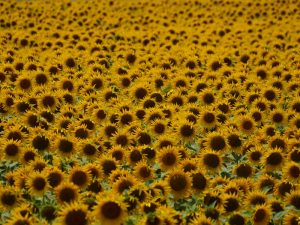
July 18 Thursday: Konya & Çatalhöyük
At 7:30 am, I took a taxi to the train station (200TL). The station, though not big, is new, modern and user-friendly. I took a business class seat in a female 4-seat compartment and met two young Turkish ladies. The seat is most comfortable and we were served breakfast! As I already had breakfast, I took a cup of tea. The train is super clean and tidy and takes an hour and 40 minutes to cover some 250km.
I got off the station at Konya which is far from the old city. I took a taxi that cost over 300TL to reach my hotel in the heart of the old city.
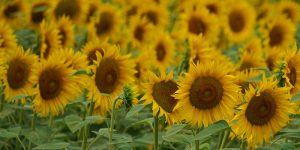
I immediately asked the hotel receptionist for help to find a car to Çatalhöyük, a very large Neolithic and Chalcolithic proto-city with two settlements on a 37 ha site on the Southern Anatolian Plateau, existed approximately 7500 – 5700 BC. It has been declared a World Heritage Site with the following description-
“The tall eastern mound contains 18 levels of Neolithic occupation between 7400 BC and 6200 BC including wall paintings, reliefs, sculptures and other symbolic and artistic features. Together they testify to the evolution of social organisation and cultural practices as human adapted to a sedentary life. The western mound shows the evolution of cultural practices in the Chalcolithic period from 6200 BC to 5200 BC. Çatalhöyük provides important evidence of the transition from settled villages to urban agglomeration, which was maintained in the same location for over 2,000 years. It features a unique streetless settlement of houses, clustered back to back with roof access into the buildings”
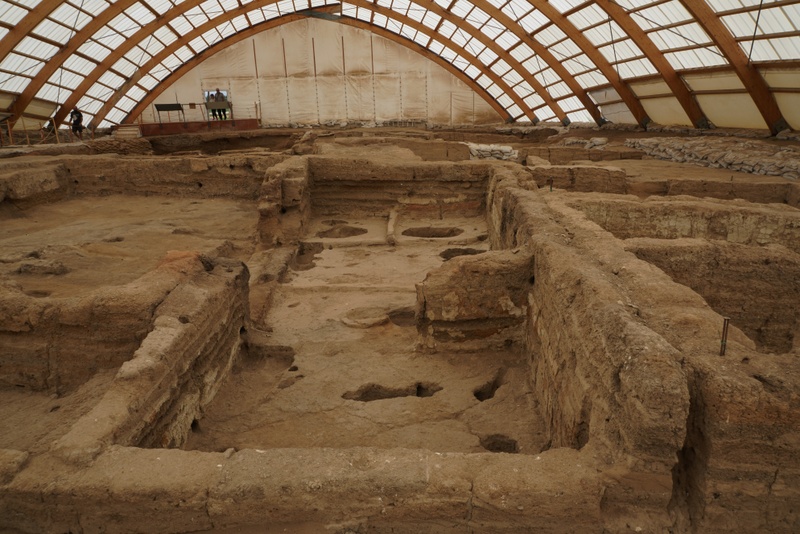
I had a pleasant 40-minute ride to the archaeological site. As there were few visitors, I could explore the two mounds leisurely. Several mudbrick houses have been re-constructed at the entrance. The site was first excavated by James Mellaart in 1958. There are several salient features of this settlement which existed from 7500 BC to 5200 BC.
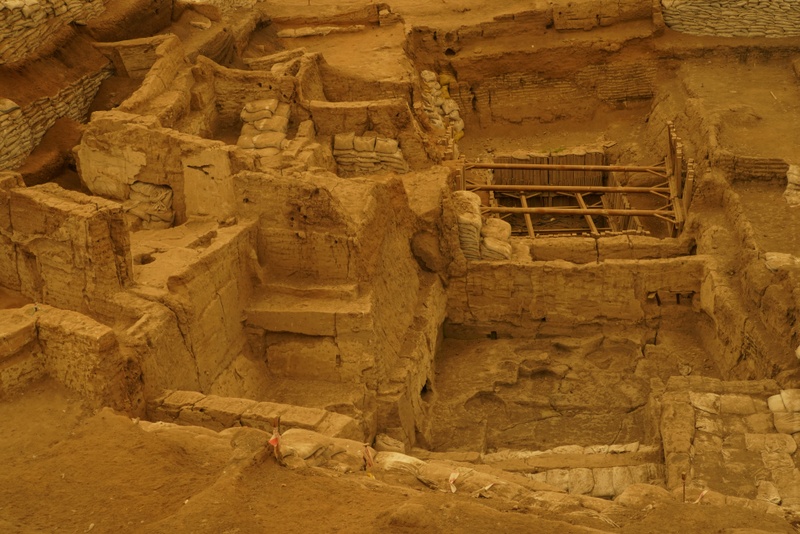
- Çatalhöyük was composed entirely of domestic buildings. The population of the eastern mound has been estimated to be 10,000 people at maximum. Average population might be between 5,000 and 7,000.
- People lived in mudbrick houses that were crammed together in an aggregate structure without footpath or street between dwellings which were clustered in a honeycomb-like maze.
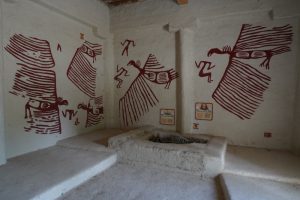
- Most were accessed by holes in the ceiling and doors on the side of the houses with doors reached by ladders and stairs.
- The rooftops were effectively streets while ceiling opens served as the only source of ventilation.
- Houses had plaster interiors characterized by squared-off timber ladders or steep stairs. The main rooms contained raised platforms that may have been used for a range of domestic activities.
- Typical houses contained two rooms for everyday activity. All interior walls and platforms were plastered to a smooth finish. Some of the larger houses had ornate murals. Ancillary rooms were used as storage and were accessed through low openings from main rooms.
- As a part of ritual life, the people buried their dead within the village.
- Archaeologists identified very little rubbish in the buildings and found middens outside the ruins with sewage and food waste, ash from burning wood, reeds and animal dugs.
- Over time, houses were renewed by partial demolition and rebuilding on a foundation of rubble which was how the mound was gradually built up.
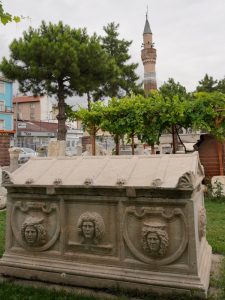
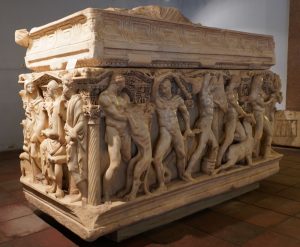
I was glad to make this trip to see this small but interesting site. I returned to the old town and visited the Archaeological Museum which has a few exhibits excavated from Çatalhöyük and many artifacts from the Neolithic, Bronze Age, Iron Age, Classical, Hellenistic, Roman and Byzantine periods. The most important artifact is the marble sarcophagus of the 3rd century BC with elaborate sculpting events depicting the life of Hercules.
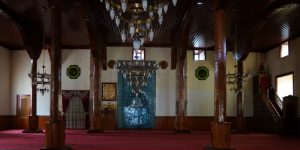
Next door is the Sahip Ata Mosque (1258-77), a madrasa and a hammam. Sahip Ata was a vizier (equivalent to government minister) of the Sultanate of Rum in the second half of the 13th century.
The museum (a former madrasa) is small but interesting with 220 ethnographic items collected from various mosques in the provinces Konya, Aksaray and Karaman. Exhibits include carpets, handwritten Qurans, candelabras, swords, beads, wooden doors etc.
From the museum, I stepped into the tomb of Sahip Ata. There are several tombs in the chamber which roof and walls are all covered with most exquisite patterned blue tiles.
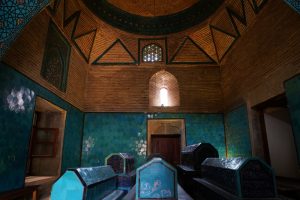
The old hammam across the road looks interesting. I loved to try but decided to return the next day (I did not have time and missed it).
I walked back to my hotel getting myself lost in the bazaars and narrow alleys of the old city. It was time to rest as I had been on my feet since 11 am.
July 19 Friday: Konya & Sille
Today, I spent most of my time on the Mevlȃna Museum and strolling in Sille and the old city. In the morning, I took a walk in the cemetery opposite the Mevlȃna Museum. It is peaceful and green.
I wanted to get an audio guide for the Mevlȃna Museum which is the mausoleum of Jalal ad-Din Muhammad Rumi, a Persian Sufi mystic who was also known as Mevlȃna or Rumi. But as I had left my passport in the hotel, I could not get an audio guide.
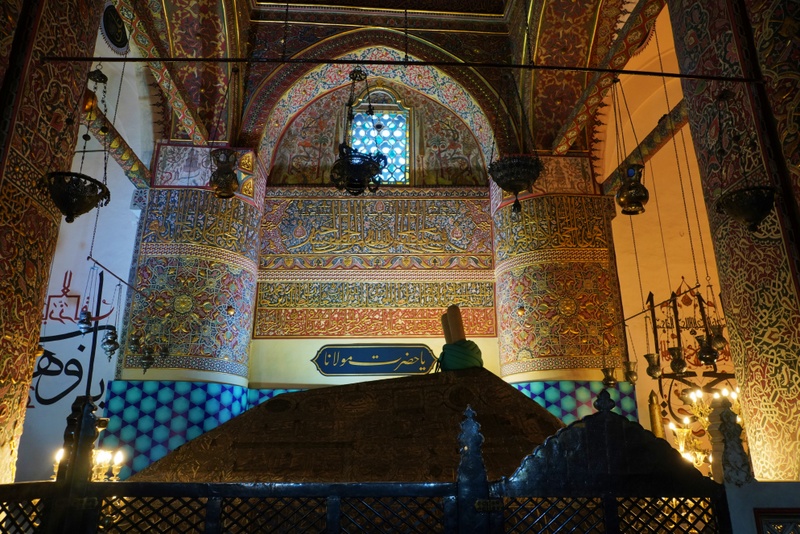
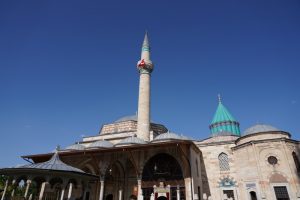
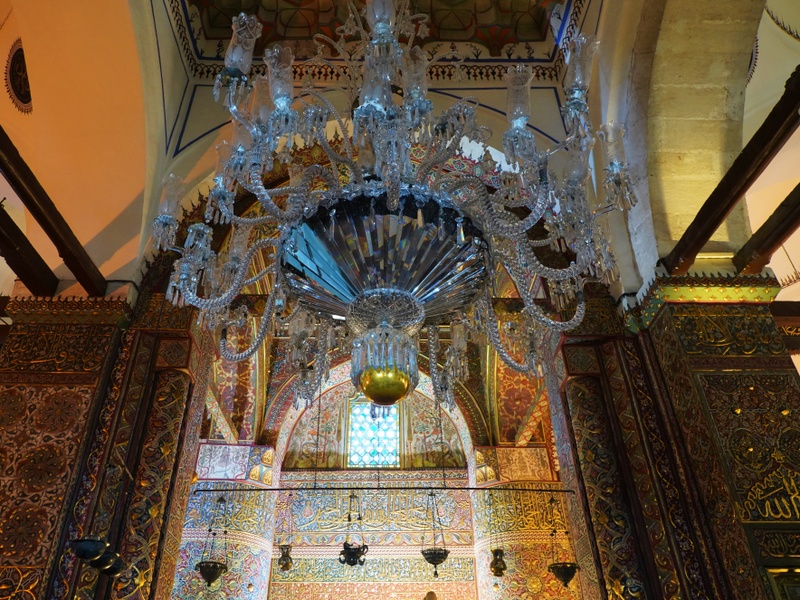
Mevlȃna (September 1207 – December 1273) born in Balkh (present-day Afghanistan) or Wakhsh (present-day Tajikistan), was a Persian poet, Islamic scholar, theologian and Sufi mystic. When the Mongols invaded Central Asia sometime between 1215 and 1220, his father Baha ud-Din Walad, a theologist, jurist and a mystic set out westwards with his family and disciples. On invitation of Seljuk sultan Ala’ al-Din Kayqubad, Baha ud-Din settled down in Konya in 1228 and became the head of a madrasa. Rumi inherited his father’s position upon his death in 1231.
Rumi was famed for his poetic and prose works and his religious philosophy. His poetry forms the basis of much classical Iranian and Afghan music. His work has been translated into many languages. A scholar Professor Majid M. Naini sums up Rumi’s legacy as follows:
“Rumi’s life and transformation provide true testimony and proof that people of all religion and backgrounds can live together in peace and harmony, Rumi’s vision, words, and life teach us how to reach inner peace and happiness so we can finally stop the continual stream of hostility and hatred and achieve true global peace and harmony”
After his death, Rumi’s followers found the Mevlevi order (better known as the whirling dervishes). Leadership of the order has been kept with Rumi’s family in Konya uninterrupted since then. The museum also houses the dervish lodge.
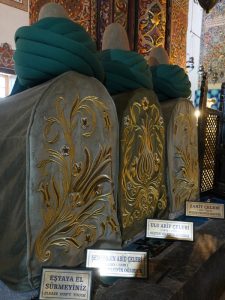
The iconic mausoleum is a must-see. Funded by the Georgian Queen Grücü Hatun, a close friend of Rumi, it was completed in 1274. Rumi lied next to his father Baha’ ud-Din Walad. It has become a pilgrimage site.
The architecture is unique with a conical dome is covered with turquoise faience. Several sections were added till 1854. I was dumbfounded by the rich interior, the sheer space and the number of coffins and their design of the mausoleum. The Seljuk motifs, silverware and Seljukian rock carving are beautiful.
I stared for a long time at the layout, walls, doom and ceiling of the mausoleum. The sarcophagus of Mevlȃna is covered with brocade, embroidered in gold with verses from the Quran. There are several sarcophagi on the platform. The rich colours of the tiled interior and superb craftsmanship are breath-taking.
I passed through the Ritual Hall used to perform the ritual dance. All the accompanying musical instruments are on display here.
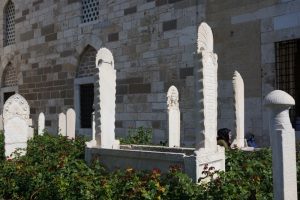
A small mosque next to the Ritual Hall, is now used for the exhibitions of a collection of old, illustrated Quran and extremely valuable rugs. There is also a box containing the Holy Beard of Muhammad.
Across the courtyard from the mausoleum is the lodge kitchen and a row of cells where Sufi followers would have lived and which now contain exhibits on dervish life.
Outside the mausoleum, I saw several tombs for royal family members. More interesting are the flower plots with tombstones for musicians and women who had worked here and important people including poets.
My next destination was Sille, a village 10 km from Konya where Greek lived peacefully for over 800 years. Mevlȃna after witnessing a miracle that happened at the nearby Orthodox Christian monastery of St. Chariton in Sille, constructed a small mosque inside the church. He asked the Turks never to hurt the Greeks of the village. Hence, Sille is one of the few villages where the Cappadocian Greek language was spoken until all Greek inhabitants left in 1924 in accordance with the 1923 agreement on population exchanges between Greece and Turkey.
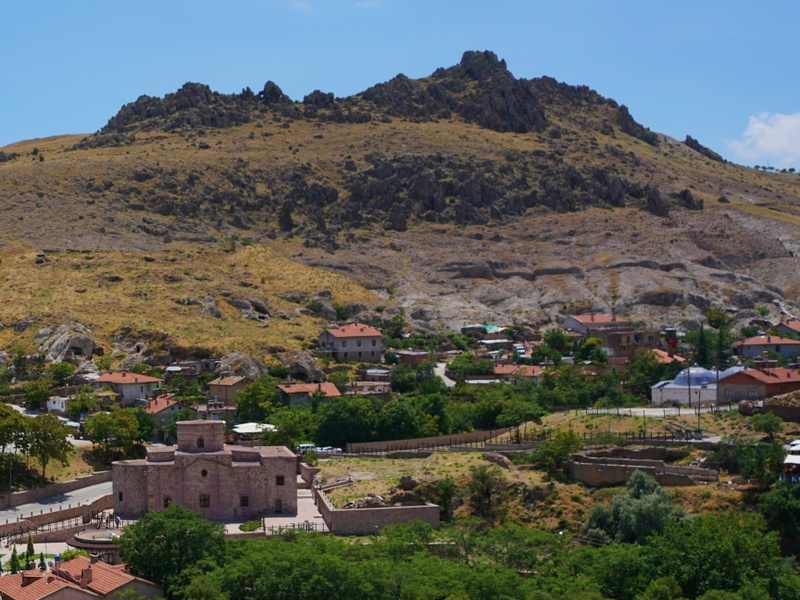
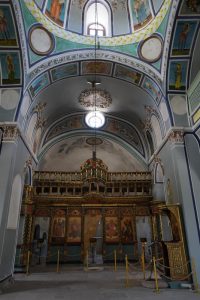
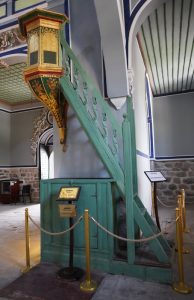
Today, many tourists both local and overseas, come to visit the St. Helen Museum, former Greek Orthodox church of Agia Eleni, commissioned by Empress Helena who passed through Sille and Konya on her way to Jerusalem church dating 327 AD. The church colourful frescoes has been restored recently.
I walked uphill to visit the small Küçük Kilise which is museum dedicated to clocks and other timepieces. I had a panoramic view of the valley. The opposite hillside is pock marked with ancient cave dwellings.
A stream/water channel stream runs through the centre of the village. There are many souvenir shops, cafes and restaurants along the stream. I wandered around and had a snack.
When I got back to the old city, I returned to the museum with my passport and got an audio guide (20TL). I walked through the mausoleum once again stopping at some 60 spots to listen to the explanations. I was able to learn a bit more about the life and visions of Mevlȃna, the architecture and unique features of the mausoleum complex and the Mevlevi order.
I enjoyed strolling around the old city and visited a few mosques.
Sultan Selim Mosque (1558-1567) commissioned in 1558 by Selim II and completed in 1570, is a typical double-minaret mosque of the 16th century. it resembles Faith Mosque in Istanbul. The praying area is roofed by a big dome. There are seven small domes over the portico. The mihrab is made of blue marble and the minbar is made of white marble.
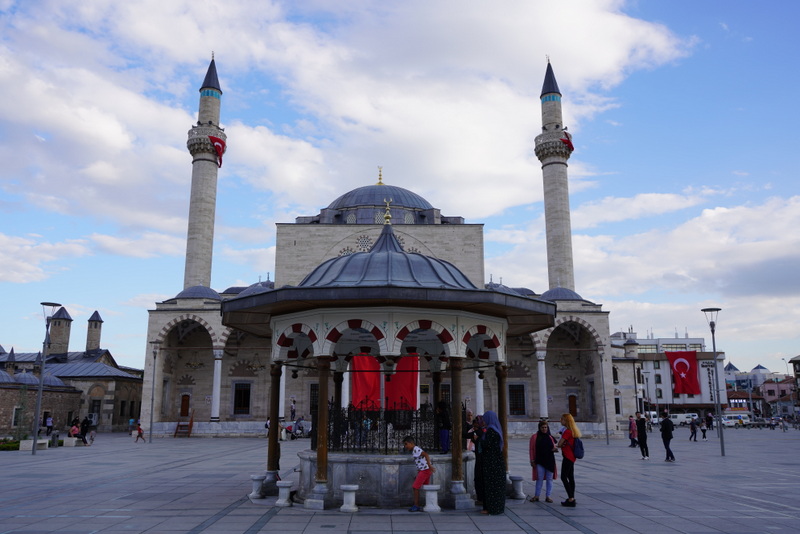
Aziziye Mosque (1671-1676) is unique and exquisite. The double minaret building has a mixture of baroque and traditional Ottoman architectural styles. In each minaret the balcony roof is supported with columns which makes the mosque unique in Turkey.
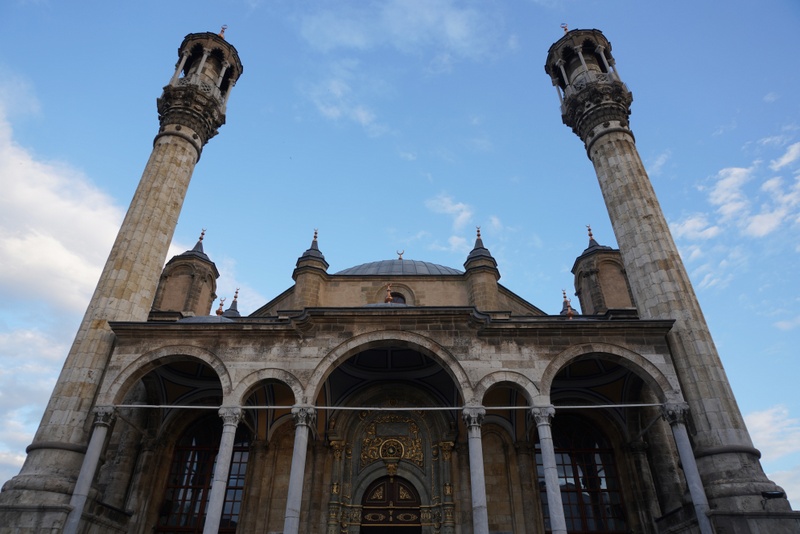
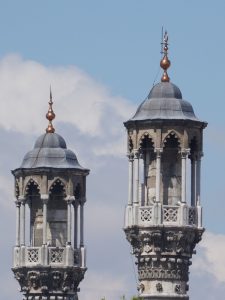
On first sight, I thought it was an Orthodox church that had been converted into a mosque. Once I stepped inside, I began to notice some interesting features. Its main floor is elevated and stairs are used to reach the main floor. The floor space is not wide and there is no yard. The praying hall is square shaped and its ceiling is a big dome. The nartex has three smaller domes on six marble pillars. The windows are wider than the doors.
I was captivated by the light, stone-cutting work, interior decorations and atmosphere of this small mosque. I visited it a few times.
Alȃeddin Mosque located in the citadel, was constructed in stages between mid-12th and mid-13th centuries to serve as the “Mosque of the Throne” for the Seljuk Sutlans of Rum. It also contains the dynastic mausoleum.
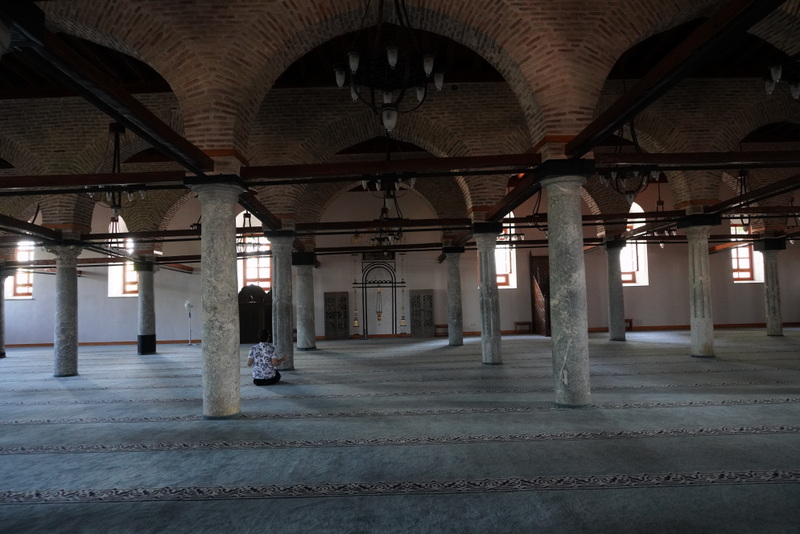
Following the capture of the city in 1080 by the Seljuk, a basilica on site was converted into a mosque. A pillared mosque according to Arabic design was built with a wooden ceiling support by 42 antique columns. Much of the building material and architectural ornament incorporated in later rebuilding, especially columns and capitals, was salvaged from this basilica and other nearby Byzantine structures.
Major renovation work is taking place both inside and outside the complex. I went inside the mosque which interior is barren. I also visited a former madrasa opposite the mosque which has been turned into a museum displaying mosaic tiles. But the displays are disappointing and not worth visiting.
But I like Kapi Mosque in the bazaar which interior is warm with rich colours.

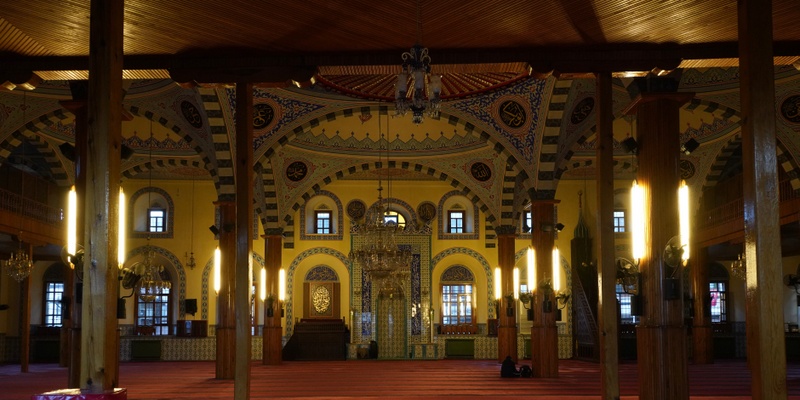
In the evening, I met up with Sabahattin and his group in the hotel. They just came from Cappadocia and would spend a night in Konya. I joined them for dinner in a nice restaurant in front of the Mevlȃna Museum. I had etliekmek (a thin pizza) and other local special dishes. The Iranians are nice and generous. At the end, I had a free dinner as the guest of Sabahattin and my new Iranian friends. I am blessed!
July 20 Saturday: Konya – Istanbul – Moscow
I got up at 2:15am and was off to the airport at 3 am. My flight took off at 4:45 am and I was at the Istanbul airport around 6am.
My flight to Moscow would take off at11:05 am. Despite its vast space, the new airport has lounges for business and first class pasengers but no paid lounge for Priority Pass holders. Unfortunately, I found no comfortable sitting area in the main hall which is filled with shops like a market place. I would rather go to the waiting area near the boarding gate. But the information was not available till two-three hours before departure. What a mess for a modern new airport!
My three-hour flight to Moscow was pleasant especially after a long wait at the airport. My happy and educational stay in Turkey came to an end.
Remarks (finished and uploaded on May 29, 2020)
I am glad to have spent four lovely and relaxing days in Ankara and Konya after a great 13-day cultural journey from Trabzon to Gaziantep. Without fixed itinerary, I was as free as a bird! Both cities and Turkey as a whole leave a deep impression after having spent 17 full days in exploring eastern and central Turkey.
I always like Turkey: its people, culture, food, landscape and scenery. My first visit to Turkey was in 1979 on my way to attend a one-year course in Oxford. My subsequent visits were largely centred around Istanbul, top tourist spots in the west coast and Cappadocia. This time I was at the Black Sea for the first time in my life, travelled through the high plateaus and the expansive mountainous regions bordering Georgia, Armenia, Iran, Iraq and Lebanon. The landscape and scenery are impressive.
Turkey has made tremendous progress since 1970s. As a whole, it is the most progressive, secular and open country in this region as compared with its Islamic counterparts. Extensive highway networks have been built (It has done much better than India). The fast train network from Istanbul to Ankara and Konya is modern, comfortable and efficient. With extensive exploitation of hydroelectric and water resources, it has sped up economic developments through irrigation and large-scale cash crop farming. Hence, the standards of living even in more remote areas seem fairly good.
Nevertheless, the dams on the Euphrates and the Tigris have destroyed many irreplaceable cultural sites from the Upper Mesopotamian region which is the cradle of civilisation. The dams also destroy or disrupt eco-systems and reduce the water resources available to down-stream countries. Time will tell the true economic, human, cultural and ecological impacts of these mega dam projects.
I had a great time also because I have met lovely people. Kubra in Trazbon is warm and forthcoming. Arda, Sabahattin has a 3-C son: cute, clever and cheerful. Sabahattin who runs his family tour company from Van, is honest and reliable. I am most grateful for his offer to give me a lift to Ankara and invitation to join his Iranian group for dinner in Ankara and Konya. The Iranians are warm, friendly and generous bringing sweet memories of my time in Iran.
I could hardly remember what I had seen in Ankara on my first visit. I must thank Sabahattin for bringing me back to the capital which has grown and smartened up. It is a nice and pleasant surprise to find a green leafy and relaxing city littered with monuments of all ages.
I like Ankara. It is not as touristy and spoilt as Istanbul and the cities along the west coast. I enjoy strolling aimlessly in the old city. The castle, the Augustus Temple and Roman Baths are fantastic.
The Museum of Anatolian Civilisation is a precious gem. The exhibits especially those from the Neolithic, Chalcolithic and Bronze Ages, and Hittite Period, are outstanding and exquisite. I had a most enjoyable museum visit owing to the beautiful historical building housing the exhibits, excellent lighting and presentations. I would revisit it with the aid of an audio guide if I return to Ankara one day.
I had not planned a visit to Konya till Sabahattin told me his group would be there on July 19 after Cappadocia. I asked him to book a room for two nights in the same hotel and fix my flight from Konya to Istanbul on July 20. As a result, I had two wonderful days in Konya which is packed with architectural gems that showcase the artistry of the Seljuk sultanate.
The old city of Konya though small, is compact and best explored on foot. As I stayed opposite the Sultan Selim Mosque, I was right at the centre and close to the bazaar. I visited the impressive Mevlȃna Museum and Aziziye Mosque twice. The mausoleum of Jalal ad-Din Muhammad Rumi with countless tombs of royal families, leaders of and people closely associated with the Mevlevi order and the dervish lodge are atmospheric and mesmerising. The interior decoration of the mausoleum is so colourful and exquisite and different from any mausoleums that I have visited.
Konya is a nice base to explore the area. As I did not have much time, I have only visited Çatalhöyük, an amazing site providing a glimpse of a proto-city that existed some 9,500-7,700 years ago. My side trip to Sille, a former Greek village is most interesting. By taking a public bus, I spent some 45 minutes touring the suburb which is nice and orderly. I am surprised by the pleasant living environment of these middle-class neighbourhoods.
I would not have made my way to Eastern Turkey had I not bought a ticket to Moscow from the Turkish Airline. I have indeed made the right decision and had a most enjoyable and educational journey. There is still a lot to see. Out of the 17 World Heritage Sites in Turkey, I have visited 11 so far. I am sure I shall return to Turkey to explore the country and visit the other archaeological and World Heritage Sites.


